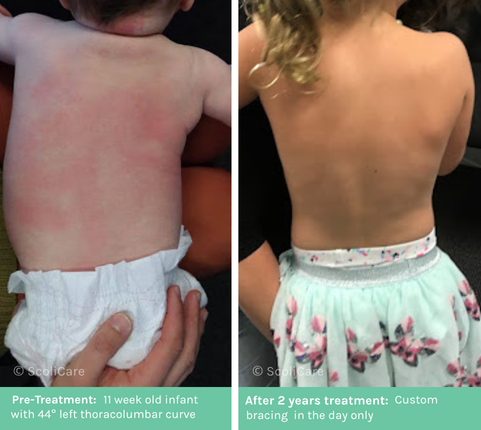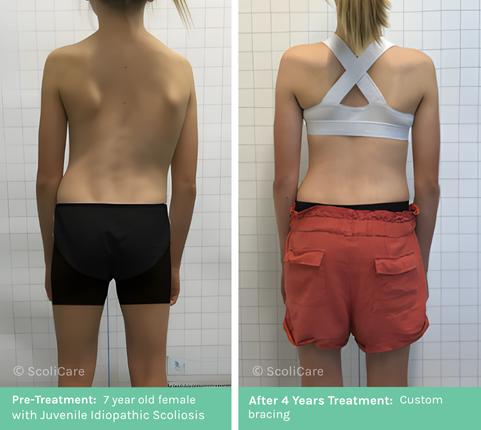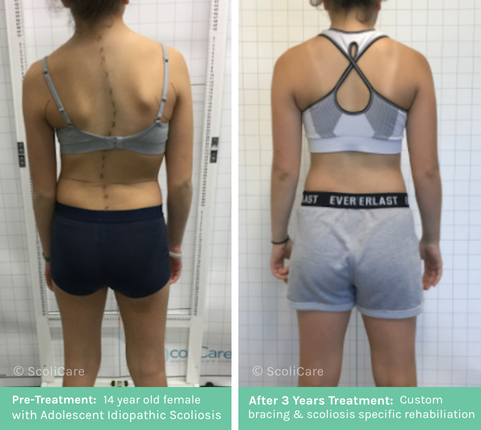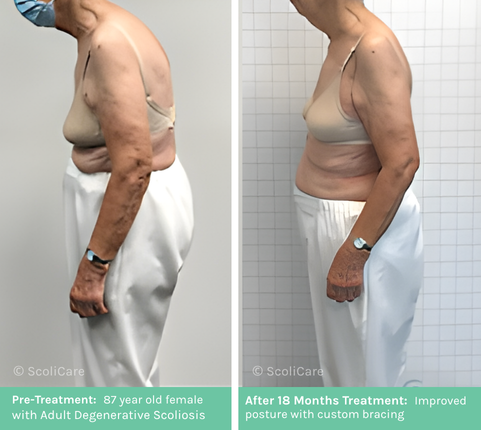Everything you need to know about scoliosis and treatment options
Affecting both children and adults, scoliosis presents with varying degrees of severity. Some individuals might only have slight symptoms, while others notice significant changes in their body’s alignment, posture or movement. Early detection is important in seeking treatment options. Visiting a dedicated scoliosis clinic helps ensure you receive a personalised treatment plan, specifically for your inidividual case.

What a Scoliosis?

Scoliosis is often thought of as a condition that only affects teenagers. In fact, it can develop at any time. In adults, scoliosis can develop from a previously undiagnosed childhood condition or occur later in life due to degenerative changes in the spine. While some adults experience mild symptoms, others may see the curve worsen over time, potentially affecting mobility and quality of life. Early intervention with custom bracing and scoliosis specific rehabilitation can help manage symptoms and improve quality of life.
What is Infantile Scoliosis?

Infantile scoliosis occurs in children under the age of 4, usually presenting as a left-sided curve. While many cases may resolve naturally as the child grows, some can worsen over time, potentially leading to more serious problems. Early detection and intervention are key to preventing progression. Treatment options vary based on the severity of the curve and may include monitoring, casting, custom bracing, and in severe cases, surgery.
What is Adolescent Scoliosis?

What is Juvenile Scoliosis?

Juvenile scoliosis is a type of idiopathic scoliosis that affects children between the ages of 4 and 10 years of age. It is more common in girls, particularly between ages 6 and 10. The condition often worsens over time, with a higher risk of progression if not detected and treated early. In many cases, treatments such as custom bracing and scoliosis specific exercise rehabilitation are available as evidence-based treatment options for patients with Juvenile Scoliosis.
What is Infantile Scoliosis?

Infantile scoliosis occurs in children under the age of 4, usually presenting as a left-sided curve. While many cases may resolve naturally as the child grows, some can worsen over time, potentially leading to more serious problems. Early detection and intervention are key to preventing progression. Treatment options vary based on the severity of the curve and may include monitoring, casting, custom bracing, and in severe cases, surgery.
What is Scoliosis?

Scoliosis is a sideways curvature of the spine that typically forms a “C” or “S” shape over time. While the spine has natural curves from the side, it should look straight when seen from the back. Signs of scoliosis may include a visible curve, uneven hips, shoulders or waist levels, a forwad lean or hunch, or pain.
People of all ages can develop scoliosis, and its impact often depends on the age of onset and its severity. Early diagnosis is important in managing the condition and seeking treatment Ongoing screening, especially during growth periods, helps in detecting scoliosis early and planning appropriate care.
What is Scoliosis?

Scoliosis is a sideways curvature of the spine that typically forms a “C” or “S” shape over time. While the spine has natural curves from the side, it should look straight when seen from the back. Signs of scoliosis may include a visible curve, uneven hips, shoulders or waist levels, a forwad lean or hunch, or pain.
People of all ages can develop scoliosis, and its impact often depends on the age of onset and its severity. Early diagnosis is important in managing the condition and seeking treatment Ongoing screening, especially during growth periods, helps in detecting scoliosis early and planning appropriate care.
What is Scoliosis?

Scoliosis is a sideways curvature of the spine that typically forms a “C” or “S” shape over time. While the spine has natural curves from the side, it should look straight when seen from the back. Signs of scoliosis may include a visible curve, uneven hips, shoulders or waist levels, a forwad lean or hunch, or pain.
People of all ages can develop scoliosis, and its impact often depends on the age of onset and its severity. Early diagnosis is important in managing the condition and seeking treatment Ongoing screening, especially during growth periods, helps in detecting scoliosis early and planning appropriate care.
The benefits of non-surgical treatment
Managing and treating scoliosis requires a personalised treatment plan tailored to each patient. Non-surgical treatments, such as custom bracing and scoliosis-specific exercises, may help reduce pain, improve posture, and support spinal stability. These methods can also be helpful in preventing further curvature. When non-surgical treatments aren’t sufficient, for example in severe cases, surgery may be an option. A thorough assessment at a dedicated scoliosis clinician is essential in choosing the most best possible treatment approach for you.

FAQ’s
Here are some commonly asked questions around Scoliosis and available treatments:



